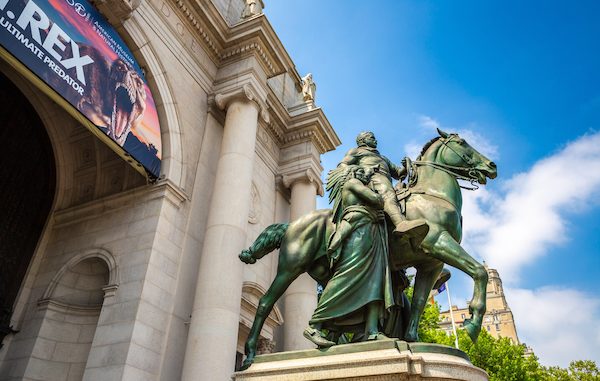
Last year, as numerous problematic monuments were taken down around the country, the American Museum of Natural History put in a request for a equestrian statue of Theodore Roosevelt, which sits in front of its entrance, to be removed.
Now, the New York City Public Design Commission has voted unanimously to authorize the statue’s removal, and will relocate it.
While no date has been fixed for the statue’s removal, a spokesperson told The Art Newspaper that it’s expected to be “in the coming months.”
The statue will be relocated to the grounds of a cultural institution. “Discussions concerning storage and ultimate destination are ongoing,” the spokesperson said.
The statue, which has been at the Central Park West entrance of the museum since 1940, has come under fire for quite some time for its depiction of Roosevelt. The 26th US President is seen riding on horseback, while a Native American and an African man stand to either side, shirtless and positioned below him.
For many, The New York Times wrote, the statue stood for a “legacy of colonial expansion and racial discrimination.”
In 2017, the city commission had considered taking it down, though it ultimately couldn’t agree on a verdict. In fact, the American Museum of Natural History even hosted an exhibition – ‘Addressing the Statue’ – which contextualized the statue’s past and addressed its controversy.
“Height is power in public art, and Roosevelt’s stature on his noble steed visibly expresses dominance and superiority over the Native American and African Figures. Whatever the intent at the time of its commissioning, the sculpture reads as a depiction of hierarchy to many viewers in New York City today,” the panel had written in a report.
In place of the statue, Rolando Kraeher of Studio Kraeher Architects has been given the honor of redesigning the space. The new design is expected to be “as simple and minimal as possible,” said Kraeher.
“Removing the statue creates an opportunity for a new concept about inclusivity, openness, and welcoming.”
[via

Leave a Reply